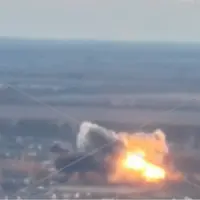
(RIO DE JANEIRO) — Scientists have quantified how much more fire-prone South America has become in recent decades, as several parts of the continent experience severe wildfires.
Some regions in South America are experiencing many more days with extreme fire conditions, putting some of the continent’s most important ecosystems — such as the Amazon rainforest and the Gran Chaco forest — in grave danger of a single spark starting an uncontrollable wildfire, according to a study published Thursday in Communications Earth & Environment journal.
Since 1970, the number of days per year that are extremely hot, dry and have conditions of high fire risk, such as heavy winds, have tripled — even quadrupled — in some parts of South America, the researchers found. Millions of square kilometers have experienced the high increase to fire risk, Raul Cordero, a climate scientist at the University of Groningen in the Netherlands and lead author of the study, told ABC News.
A concurrence of a drought and heat wave is a “horrible” cocktail for the onset of a wildfire, Cordero said. While the conditions have existed in South America before, the frequency at which the fire-risk days are happening today “cannot be compared what used to be normal in the 80s,” Cordero said.
“If somebody sets a fire, it’s going to make it quite hard to control the propagation of that fire,” Cordero said.
The researchers calculated the number of days per year that each 30-by-30 kilometer grid cell on the South American continent experienced simultaneous hot, dry and flammable extremes between 1971 and 2022. The extremes for each condition were measured by daily maximum temperature records, 30-day rainfall averages and daily fire weather index records, according to the paper.
The frequency of these simultaneous extremes increased across the entire continent during the time frame, the data showed.
There are four fire-prone “hotspots” in South America that researchers found to have particularly increasing risk for fire: the Amazon rainforest in most of its nine-country span; the border between Venezuela and Colombia; the Gran Chaco, the second-largest forest on the continent located in Argentina, Bolivia, Brazil, and Paraguay; and central Chile, which experienced severe wildfires in February, Cordero said.
The main driver to the increase of fire conditions is climate change, Cordero said.
Places like the Amazon rainforest have been experiencing persistent drought for the last two decades, while the global temperature has been increasing simultaneously, he said.
When agricultural fires are set, it gives way for the fires to get out of control, and fast, Cordero said. Agricultural fires are typically set by farmers aiming to clear the land before the next season but also for illegal activity, such as logging, he said.
“Because of the weather conditions are so extreme, they set the fire, and then the propagation on the fire can’t be controlled,” he said. “That’s the problem.”
In addition, the warm El Niño phase increased the fire risk in the northern Amazon region, while the cooler La Niña phase led to increased fire risk in central South America, the paper found.
Several parts of South America are currently experiencing record-breaking wildfires, including the Amazon rainforest, the Cerrado tropical savanna and the Pantanal wetlands.
Further deforestation in the region will lead to more severe wildfires in the future, experts say.
Copyright © 2024, ABC Audio. All rights reserved.












